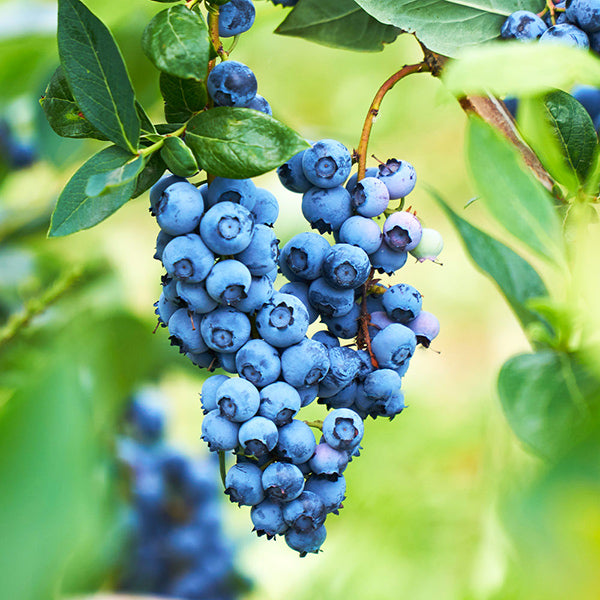-
Description
The All-In-One Citrus Bush for Every Home and Patio
Why Meyer Lemon Bushes?
Meyer Lemons are different from the small, tart and acidic lemons at your grocery store because the fruit is literally a cross between traditional sour lemons and sweet oranges – yes, you get both sweet and savory flavors from each squeeze of this world-beating fruit!
As you know, the fruit available at your grocery store is not chosen for flavor but rather shelf life – that is why the lemons available to you are small with very thick skin. Meyer Lemons are not available in grocery stores because the fruit skin is so wonderfully thin that it would bruise while riding in a crate – however, the thin skin is perfect for home chefs that want tantalizingly fresh fruit right off the branch! The thin skin allows the citrus juices to develop fully, making it the perfect raw fruit for juices, desserts, and flavoring.
Can I grow it? YES, YOU CAN! The Meyer Lemon Bush has remarkable cold and heat tolerance so anyone in the country can grow it – if your winters get cold, simply bring your Meyer Lemon Bush indoors for the winter. Our bushes max out at around 8 feet so you don’t have to worry about them out-growing your space. And when you bring it indoors, you can enjoy the jasmine-citrus fragrance throughout those long winter months. Some of these bushes have been grown for up to 4-5 years and have fruited for several seasons.
Place your order NOW and have your own Meyer Lemon Bush delivered right to your door.
Looking for that unique gift? Look no further! It’s the gift that truly keeps on giving – a memorable keepsake to commemorate holidays, housewarmings, birthdays, bereavements – this bush will produce fruit for decades and every time someone picks a lemon they will think of you!
Why Fast-Growing-Trees.com is Better
Are all Meyer Lemon Bushes equal? No! A Meyer Lemon Bush from Fast Growing Trees is different:
• Our Meyer Lemon Bushes are greenhouse-grown. We control how much light, heat, and water the bushes receive to ensure you get the best bush imaginable- many that we ship to customers already have fruit on them!
• Our Meyer Lemon Bushes are grown in their existing pots. Unlike the violent process of digging a bush out of the ground, our bushes are nurtured to full potential without disrupting the roots so you receive the happiest and healthiest bush available.
• Fast Growing Trees only sells the 'Improved' Meyer Lemon variety – the only cultivar that has proven disease-resistant capabilities.
• When you order our larger-sized Meyer Lemon Bush, you can look forward to faster fruiting...even in the first year of growth! Our larger sizes are perfect for those who don't want to wait to harvest delicious lemons.
You’ve heard the chatter, now it’s time to try for yourself – this is the bush that so many home chefs have been successful with – start enjoying that sweet fruit immediately and order yours today!
Please Note: This product is specific to Florida. Find Meyer Lemon Bushes available in other states.
Planting & Care
1. Planting: It is best to plant the Improved Meyer Lemon Bush in a warm, sunny area where the soil drains well. Six hours (or more) of direct sun is best for the bush. Planting next to a house or under an eave will provide some frost protection. Remember to water the Improved Meyer Lemon Bush deeply once every seven to ten days in midsummer (newly planted bushes may need more frequent watering until established), and water less often if it rains or if the weather is cool.
If you're planting in a container, select one that is 1 to 2 pot sizes larger than what it initially arrived. Fill the bottom of your pot with a 2-inch layer of crushed stone to improve drainage. Then, fill with soil, 2 inches of compost, water well, and place near a south-facing window.
*Note: The leaves of the Meyer Lemon can be toxic to pets.
2. Watering: Allow the soil to dry down to 2 inches between waterings.
While the roots prefer to stay on the dry side, citrus leaves love humidity. Indoor Citrus will do best if misted daily, especially when you are running your heat during cooler months. You can also use a humidifier or fill your pot's saucer with rocks and add water; place your plant on the rocks ensuring the bottom of the pot is above the waterline.
3. Pollination: For indoor plants, simply take a small, dry, fine-tipped paintbrush and stick it into the center of the bloom. Swirl it around and collect the pollen on the brush. Go to the next bloom and repeat the process until every bloom has been treated. Do this once daily and don’t wash the paintbrush until after the blooms have been pollinated. The bloom will fall off naturally and the fruit will begin to form.
4. Fertilizing: Fertilize regularly with a high-nitrogen blend each month between April and September.
FGT Tip: Yellowing leaves may indicate the need for more fertilizer.
5. Pruning: Prune as needed to maintain your Lemon Bush's shape. Clip off any branches that are too long. Remove branches growing toward the trunk of the bush instead of away from it. This will maintain airflow between the branches.
















